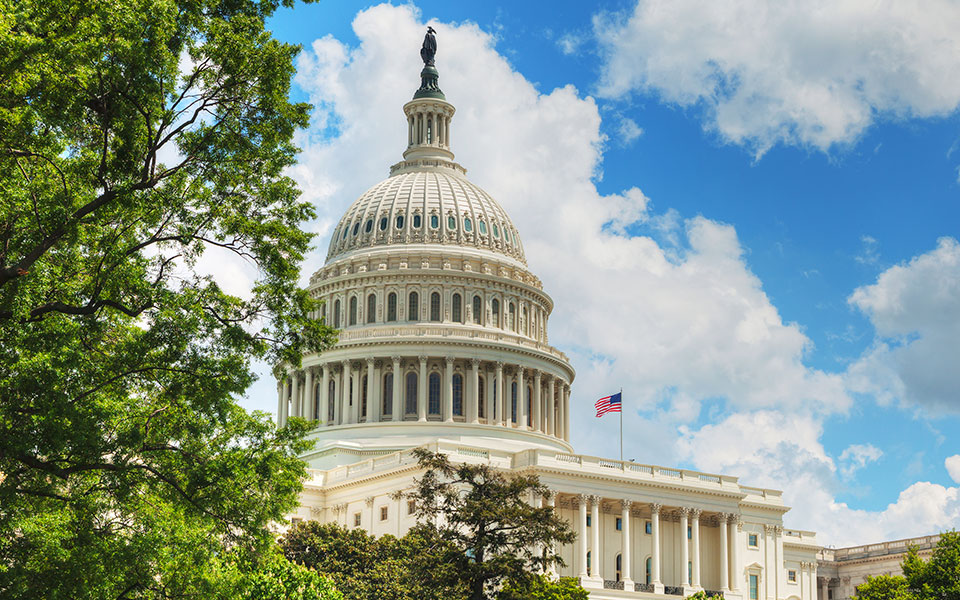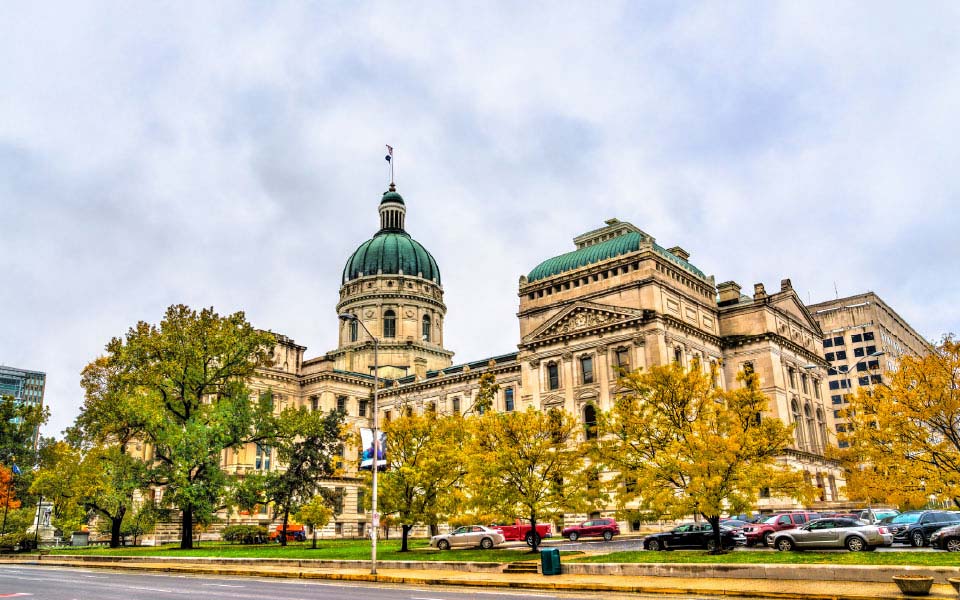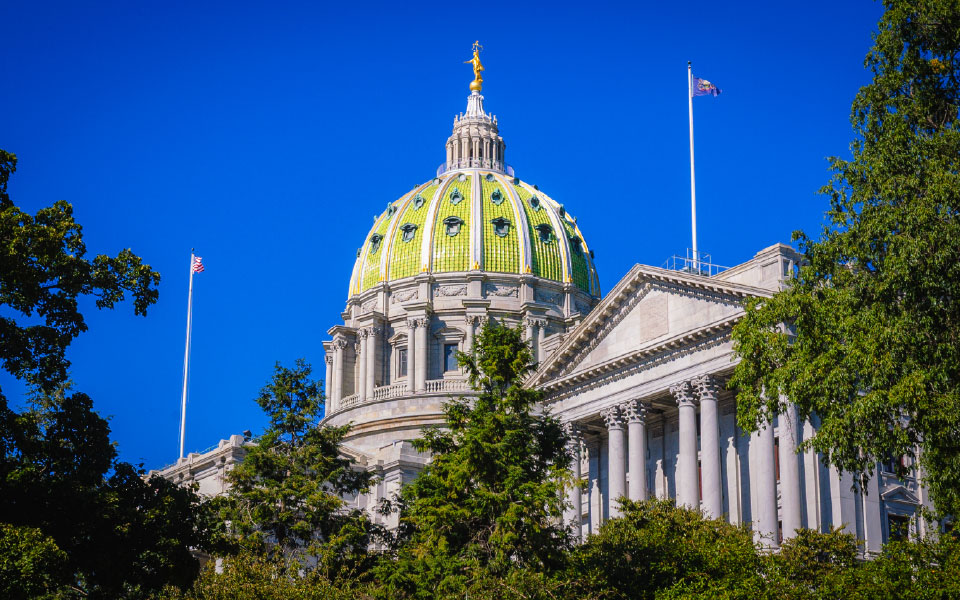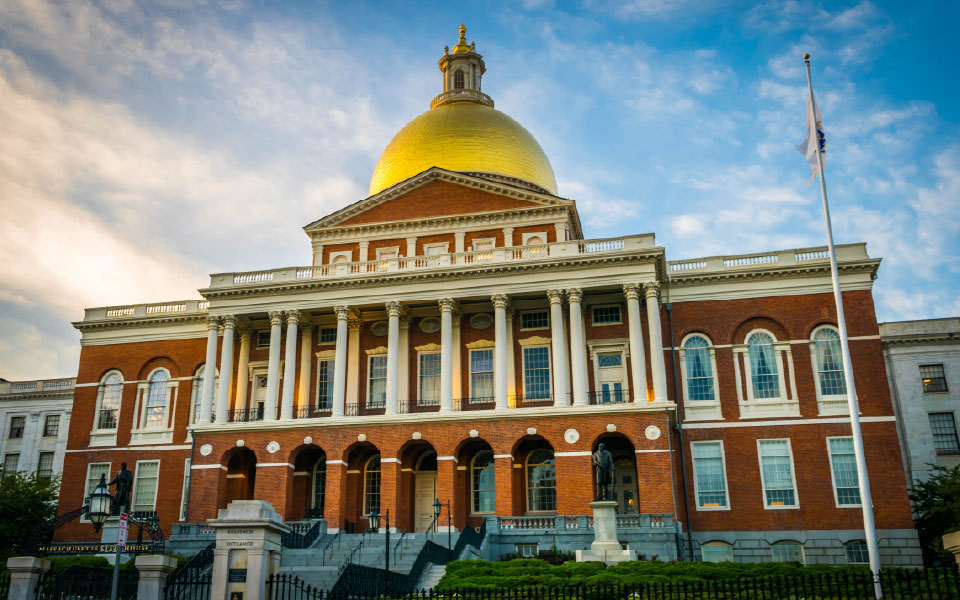Thanks to those who attended the CBIZ July 8, 2025 webinar discussing the provisions of the legislation known as the One Big Beautiful Bill Act (OBBBA). We received many questions before and during the webinar.
What follows are answers to the questions we received. If you have a specific question that is not addressed below, Request a Planning Meeting
Effective Dates, Implementation & Legislative Process
-
Where can I find the chart on the effective dates of OBBBA provisions?
- Please refer to the CBIZ resource tables for effective dates.
-
What are the effective dates for these changes?
- Various dates for different provisions.
-
When do you think the final regs will be ready?
- Impossible to predict with the reductions in workforce at the IRS. Some provisions require the IRS to respond within 90 days (e.g., list of industries to which tip income deduction applies).
-
When does the new 1099 reporting threshold go into effect? What year is it in effect?
- Payments made after Dec. 31, 2025.
-
Are existing Qualified Opportunity Zones (QOZs) grandfathered in or are they subject to change within this bill?
- Existing QOZs remain viable under pre-OBBBA rules.
Individual Income Tax, Deductions & Credits
-
To summarize everything in simple terms, what will the biggest impact be to my individual taxes based on my salary?
- Probably the increased standard deduction or the increased State & Local Tax (SALT) cap, but many factors could contribute to the answer.
-
Will the $500K income for the SALT deduction count dividend income or only work and other income?
- It is essentially adjusted gross income, which would include dividend income.
-
Is 500K dependent on filing status?
- Yes, if married filing separately the SALT deduction phaseout threshold is halved.
-
Can you deduct real estate taxes and state taxes up to $40K and also get the standard deduction of up to $30k?
- No. You have to choose between itemizing or taking the standard deduction.
Senior Deductions
-
Is the senior deduction only available for standard deduction filers or can it be taken with itemized deduction filers as well?
- It is available to all, as it is referenced in the personal exemption section (section 151), not any itemized deduction section.
-
Is the phaseout for the $6,000 based on Adjusted Gross Income (AGI) or taxable income?
- For the vast majority it is AGI.
-
With the Senior Deduction / bonus – is anything applicable if one person is over 65 and the spouse is under 65?
- Both taxpayers have to be over 65 to get two $6,000 deductions.
-
Is the $6,000 over 65 additional deduction replacing the $1,600 that is already in place and doesn’t have any income limits?
- The $1,600 (2025) section 63(f) additional standard deduction is available in addition to the $6,000 senior deduction (that phases out).
-
Does additional standard deduction for elderly of $2K ($1.6K for married filing jointly [MFJ]) stay in the law OR is it eliminated?
- The $1,600 (2025) section 63(f) additional standard deduction is available in addition to the $6,000 senior deduction (that phases out).
-
Is the new deduction for seniors available at the single phase-out amount for married filing separate?
- The $75,000 phase out amount applies to all returns other than joint returns.
-
For 2025 a MFJ couple over 65 with $125,000 AGI including $20,000 SS – the standard deduction increased by $2,300 and additional $12,000 for over 65. Deductions would cover $14,300 of SS but not eliminate it entirely. Correct?
- As the taxable social security calculation can also include tax-exempts, we cannot comment on your specific calculation. However, the assumption that all SS benefits are not necessarily eliminated by the deduction is correct.
Tip Deductions
-
Is the $25K on tips for a single filer or MFJ?
- Both, the phaseout starts at a higher level ($300K) for Joint filers.
-
Can taxpayer qualify for both OT and tip deduction?
- I don’t see anything that would prevent this, but the IRS will need to issue guidance. It could be affected by the definition of overtime: “‘qualified overtime compensation’ means overtime compensation paid to an individual required under section 7 of the Fair Labor Standards Act of 1938 that is in excess of the regular rate (as used in such section) at which such individual is employed.”
-
Is employer TIP credit calculation impacted?
- OBBBA does not change how the employer TIP credit is calculated.
199A Qualified Business Income (QBI) Deductions
-
199A deduction – what is the “phase-out” amounts for high income earners of SSTBs?
- OBBBA increased the phase-ins from $50,000 to $75,000 (single filers) and from $100,000 to $150,000 (joint filers).
-
When does the 199A new limits take effect…after 12/31/2025?
- Yes. Please refer to the CBIZ resource tables for effective dates.
-
Confirming the qualified business income (QBI) deduction has not changed in terms of limiting the deduction based on AGI for many service businesses.
- Correct; the limitation still exists although the amount was enhanced and will be adjusted for inflation after 2025.
-
Is rental property income eligible for the QBI deduction?
- OBBBA doesn’t change whether rental income qualifies—it simply keeps Sec.?199A in place permanently. Rental income remains eligible for QBI if it rises to the level of a trade or business.
-
What is the new QBI deduction?
- OBBBA creates a new $400 minimum QBI deduction for small-business owners with at least $1,000 in “active” QBI.
-
Do lawyers, CPAs, architect and engineers qualify for QBI under the new law?
- OBBBA does not change who qualifies as a trade or business for purposes of §199A.
1202 Qualified Small Business Stock (QSBS) Deductions
-
Is the $15M 1202 gain exclusion retroactive?
- No, the $15 million cap (indexed for inflation starting 2027) only applies to stock acquired after 07/4/2025.
-
What happens to someone who previously used $10M gain from 1202. Can they now sell some more of the same stock and get the additional $5M?
- No. The stock has to have been issued after July 4, 2025 to qualify for the new benefits.
Charitable Contributions
-
Does the bill change the Qualified Charitable Deduction (QCD) rules for IRAs?
- QCDs from IRAs are not impacted by the OBBBA.
-
Charitable Contributions – For 2025, that 0.5% exclusion does not apply?
- New rules apply after 2025. Please refer to the CBIZ resource tables for effective dates.
-
If MFJ and you itemize, what is the cap for charitable contributions after the 0.5% floor?
- While the OBBBA introduces the 0.5% floor, it does not change the existing caps on deductions. Those caps are still defined in Section 170(b)(1) of the Internal Revenue Code, and they remain in effect unless explicitly modified.
-
So is it only over 0.5% of your AGI or you can do the first $1,000 if single?
- You can deduct $1,000 even if you do not itemize (single) for cash gifts; if you itemize, then the first 0.5% of AGI is not deductible.
-
Are contributions limited to only cash contributions?
- For non-itemizers, the $1,000/$2,000 deduction only applies to cash.
-
Did the tax credit for charitable contributions for school vouchers make it into the legislation?
- The Act creates new section 25F, which allows up to a $1,700 credit for charitable contributions to scholarship granting organizations, with many defined terms and conditions.
Pease
-
What is Pease?
- Pease was the nickname of a provision that limited the tax benefit of itemized deductions for high-income taxpayers.
-
Pease changes & new formula limiting to 35% bracket effective for 2025 or 2026?
- New rules apply after 2025. Please refer to the CBIZ resource tables for effective dates.
-
Can you explain the 35% itemized deduction impact on high net worth (HNW) taxpayers?
- If you are in the highest bracket (37%) a deduction is worth 37% of the amount deducted. This provision limits the benefit to 35%.
Motor Vehicles
-
For the Domestic Auto Purchases, is it necessary for the loan to have originated in 2025?
- New rules apply after 2024, and ends after 2028. Please refer to the CBIZ resource tables for effective dates.
-
RVs or Motorhomes?
- No. Must be “a car, minivan, van, sport utility vehicle, pickup truck, or motorcycle”
-
Define American-made cars
- Will need guidance from the IRS. The definition excludes “term shall not include any vehicle the final assembly of which did not occur within the United States.”
-
Does the car loan deduction include loans for a car already purchased before the law? Or does it have to be for a car you purchased in 2025 through 2028?
- Must be for “any interest which is paid or accrued during the taxable year on indebtedness incurred by the taxpayer after Dec. 31, 2024, for the purchase of, and that is secured by a first lien on, an applicable passenger vehicle for personal use”
-
Is this only on cars purchased in 2025% 2B?
- Must be for “any interest which is paid or accrued during the taxable year on indebtedness incurred by the taxpayer after Dec. 31, 2024, for the purchase of, and that is secured by a first lien on, an applicable passenger vehicle for personal use.”
-
Will there be a list of eligible cars similar to those eligible for credits?
- The legislation provides the Secretary of the Treasury to issue regulations regarding documenting the deduction, and we anticipate the automotive industry will also provide information to car buyers.
-
I thought it was final assembly in the US
- The legislation requires “final assembly” to occur within the United States for the vehicle to qualify. We anticipate additional guidance will be forthcoming to determine the applicable vehicles that qualify.
Social Security & Retirement
-
Taxes on overtime and Social Security?
- For 2025-2028, $12,500 ($25K MFJ) deduction for qualified overtime pay, with phaseout starting at $150K single/$300K MFJ. No provision in the Act to make Social Security payments tax-free.
-
What about tax on Social Security benefits?
- No provision in the Act to make Social Security payments tax-free. New bonus deduction of $6,000 per eligible senior over 65 on top of increased standard deduction and senior standard deduction increase.
-
Please address taxation of Social Security payments for seniors.
- No provision in the Act to make Social Security payments tax-free. New bonus deduction of $6,000 per eligible senior over 65.
-
How does the new tax law affect retirees?
- No provision in the Act to make Social Security payments tax-free. New bonus deduction of $6,000 per eligible senior over 65 on top of increased standard deduction and senior standard deduction increase.
Bonus Depreciation, Section 179 & Asset Expensing
Bonus Depreciation
-
Is there 100% depreciation on new assets put in service during 2025?
- Yes, for qualifying assets acquired and placed in service after Jan. 19, 2025. Qualifying assets acquired and placed in service before Jan 20, 2025 remain eligible for the phased-down bonus depreciation under the TCJA (generally 40%).
-
If I purchased an industrial building that needed improvements, would those improvements be a tax write off?
- The analysis depends on the nature of the improvement being done. The improvements are likely to be depreciable as real property. The OBBBA introduces a new concept of Qualified Production Property (QPP), which includes real property used in the United States for manufacturing, production or refining of tangible personal property. This can include new construction with respect to an existing property that meets certain conditions, including that the original use of the new construction must begin with the taxpayer. The cost of QPP is eligible for a 100% deduction if construction begins before Jan. 19, 2025 and before Jan. 1, 2029, and the property is placed in service by Dec. 21, 2030. If the improvements do not meet the definition of QPP, a cost segregation study may allow a portion of the improvements (and even the cost of original purchase) to be classified as personal property eligible for 100% bonus depreciation if acquired and placed in service after Jan. 19, 2025. Another alternative could allow the use of bonus depreciation for Qualified Improvement Property under pre OBBBA law, which refers to a non-structural improvement to the interior of non-residential property.
-
So does this bonus depreciation provision allow you to just outright expense any piece of tangible property, and not depreciate over several years?
- Yes, for qualifying assets which are acquired and placed in service after Jan. 19, 2025.
-
So no retroactive 100% bonus depreciation?
- The restoration of 100% bonus depreciation is not retroactive and applies only for qualifying assets acquired and placed in service after Jan. 19, 2025. The phaseout of bonus depreciation continues to apply for assets acquired and placed in service before that date.
-
What will bonus depreciation provision mean for someone purchasing used automobile July 10, 2025? Do they get 100% depreciation, or is it still limited under 280F?
- The IRC sec 280F rules are still applicable to covered automobiles. However, there are a number of exceptions to the IRC sec 280F rules depending upon the gross vehicle weight and type of vehicle involved.
-
Are autos owned by a corporation included in the 100% depreciation?
- The auto is eligible for bonus depreciation but the IRC sec 280F rules still apply.
-
Do tangible assets that qualified for 100% bonus depreciation under TCJA now qualify again, or is it more limited? If not, if those assets qualified for the 5 year Modified Accelerated Cost Recovery System (MACRS), do they still or is it in question?
- The assets eligible for bonus depreciation under TCJA are eligible for the OBBBA bonus depreciation treatment. Additionally, the new law permits a 100% deduction for real estate which meets the definition of Qualified Production Property.
-
With reinstating 100% bonus depreciation. Do you know if 5-year MACRS has been removed for Renewable Energy Properties and Equipment?
- A taxpayer can elect out of bonus depreciation for a recovery class of property. If this election is made, then depreciation is computed based on the property’s recovery class.
-
Is accelerated/bonus depreciation addressed in the bill?
- 100% bonus deprecation is restored for assets acquired and placed in service after Jan 19, 2025.
-
Manufacturing 100% EXPENSING guidelines/guiderails?
- Costs must be categorized as items subject to expensing (under the Internal Revenue Code and IRS and court guidance) or capitalizable. If the item is subject to capitalization and is depreciable, then an analysis needs to be done to determine if sec 179 expensing or bonus depreciation applies.
Section 179
-
How does bonus depreciation differ from Sect. 179 expensing as they both deal w/ 100% expensing in year 1, rather than capitalization of the asset and write-off over estimated useful life?
- Bonus depreciation applies automatically to a qualified asset with few limitations unless an election is made for it not to apply for assets within a MACRS recovery class. Sec 179 expense applies only if an election is made for specific properties or costs. However, there are a number of limitations on sec 179 expensing: i) the election is limited to a specific amount of cost; ii) the sec 179 expense limit is phased out if property eligible for the election is purchased during the tax year in excess of a threshold amount; iii) there is a taxable income limitation; and iv) limitation with respect to certain types of taxpayers (e.g., trusts).
-
What is the difference between the 100% accelerated depreciation and the 100% deduction for qualified property?
- The new Qualified Production Property write-off is like bonus depreciation. However, while bonus depreciation is automatic (unless the taxpayer elects out of it for a recovery class of property) the QPP deduction must be elected.
-
Is 179D gone?
- The OBBBA eliminates the deduction for energy efficient commercial buildings under IRC sec 179D for property that begins construction after June 30, 2026.
Asset Expensing
-
New factory construction or does it include new construction on an existing factory?
- Qualified Production Property includes new construction if it is used by the taxpayer for the appropriate purpose.
-
Qualified Production Property- any detailed definition-warehouse building using for packing, shipping, office building etc. qualifies?
- Qualified Production Property includes only the portion of the real property used for production purposes. Specifically excluded are portions of the property used for sales, administration, software development, engineering, etc. We will need to see what guidance is issued by Treasury defining what constitutes production activities.
R&D/R&E and Section 174 Expenses & Credits
-
R&D Expenses: For the $31M gross receipt threshold, is that reviewed in the same way as gross revenue for a large taxpayer (three prior tax years)? If yes, do you have to review this threshold for each year?
- The section 448(c) gross receipts test is measured over the three-taxable-year period ending with the taxable year that precedes the current year. The OBBBA administers the test for the first taxable year beginning after Dec. 31, 2024 (sec. 70302(f)(1)(B) of the OBBBA). So, for a calendar year filer, 2025 would be the first year after Dec. 31, 2024, meaning the gross receipts measurement period would be 2022-2024.
-
What about foreign R&E expenses – immediately expensed as well or cap over 15 yr?
- Foreign R&E expenditures must continue to be capitalized and amortized over a 15-year period (section 174, as amended by sec. 70302(b)(1) of the OBBBA). Additionally, any unamortized costs cannot be recovered even if there is a transaction pertaining to a disposition, retirement, or abandonment (section 174(d)).
-
How about foreign-sourced R&D? Is it still subject to capitalization and 15-year amortization?
- Foreign R&E expenditures must continue to be capitalized and amortized over a 15-year period (section 174, as amended by sec. 70302(b)(1) of the OBBBA). Additionally, any unamortized costs cannot be recovered even if there is a transaction pertaining to a disposition, retirement, or abandonment (section 174(d)).
-
2022 and 2023 were mentioned as allowable years for amended returns for R&E expenses. What about 2024 returns which were already filed?
- Eligible small businesses may elect to retroactively apply the OBBBA changes to domestic R&E expenditures to all tax years beginning after Dec. 31, 2021, so this includes 2024 tax years (sec. 70302(f)(1)(A) of the OBBBBA).
-
Are there 3 options to amortize capitalized Section 174 expenses incurred prior to 2025: (1) amortize pre-capitalized Section 174 expenses over the remaining 5-year amortization period; (2) elect to amortize pre-capitalized Section 174 expenses over a 2-year period; (3) elect to amortize pre-capitalized Section 174 expenses over 1-year {2025}.
- The choices involving a 1-year amortization period or a 2-year amortization period pertain only to the first taxable year beginning after Dec. 31, 2024, so those choices are not available during earlier tax years (sec. 70302(f)(2) of the OBBBA). Only eligible small businesses have a choice in applying the OBBBA changes to R&E expenditures retroactively (large taxpayers do not have this choice). Eligible small businesses may elect to retroactively apply the OBBBA changes to domestic R&E expenditures to all tax years beginning after Dec. 31, 2021 (sec. 70302(f)(1)(A) of the OBBBBA). Although most eligible small businesses would probably opt to treat domestic R&E expenditures as not subject to capitalization during those prior years (i.e., reverse the capitalized amounts and treat them as immediate deductions), they technically could choose to instead apply the new capitalization/amortization rule of section 174A(c)(1) on a retroactive basis (for example, to establish a longer amortization period during the prior year).
-
If a taxpayer made an election to exclude interest for real property, can that election be reversed?
- For purposes of the section 163(j)(7) election, the OBBBA does not offer any special provisions to revoke such previous elections.
-
Can anyone make the accelerated 1-2 year Sec. 174 election for previous amortized costs? Or is there a limitation – ex. gross receipts, etc.
- All taxpayers (large and small) may elect to deduct the unamortized balance of previously capitalized R&E expenditures in the first taxable year beginning after Dec. 31, 2024, or ratably over the two-taxable year period beginning with the first taxable year that begins after Dec. 31, 2024 (sec. 70302(f)(2)(A) of the OBBBA).
-
Is the R&E Tax Credit limited in any way as a result of ability to elect R&E Expensing?
- The OBBBA does not make any changes to the operation of the section 41 R&E credit, which does not depend on whether section 174 or section 174A expenditures were deducted or capitalized.
-
Any retroactive provisions to assist with the impact amortization/capitalization had over the past several years. Huge cash drain on us two years back.
- Eligible small businesses may elect to retroactively apply the OBBBA changes to domestic R&E expenditures to all tax years beginning after Dec. 31, 2021 (sec. 70302(f)(1)(A) of the OBBBBA). This would allow eligible small businesses to treat domestic R&E expenditures as not subject to capitalization during those prior years (i.e., reverse the capitalized amounts and treat them as immediate deductions). Eligible small businesses generally are those who have less than $31 million in avg. gross receipts over the 3-year period preceding 2025, and which are not tax shelters.
-
Want to understand the R&D credit changes and how much of the previously capitalized salary expense we can recapture in the 2025 tax year.
- All taxpayers (large and small) may elect to deduct the unamortized balance of previously capitalized R&E expenditures in the first taxable year beginning after Dec. 31, 2024, or ratably over the two-taxable year period beginning with the first taxable year that begins after Dec. 31, 2024 (sec. 70302(f)(2)(A) of the OBBBA).
SALT, PTET & State Tax
-
What is SALT cap?
- The SALT Cap has been raised from $10,000 to $40,000 for tax years 2025 through 2029. However, it is now coupled with a phaseout provision under which if modified AGI exceeds $500K ($250K for separate filers), the deduction decreased by 30 cents on the dollar. Once AGI hits $600K the phase-out stops but the deduction bottoms-out at $10,000. After 2029 the SALT Cap resets to $10,000.
-
SALT tax effects for New Jersey residents?
- Being a high-tax state for both property and income taxes, NJ residents whose federal AGI is less than $500K and who itemize should see some federal tax benefits via the increased SALT deduction. However, if AGI exceeds $500K, the $40K deduction begins to phase-down and bottoms out at $10K once AGI hits $600K so wealthier taxpayers may not receive any additional tax benefits.
-
AMT effect to SALT change?
- The only provisions affecting AMT are a continued and permanent increase in the exemption and its corresponding phaseout level. PTET’s are still not a tax preference item under the AMT regime. Although the itemized deduction SALT cap was raised to $40K, that could put some individual taxpayers into AMT where taxes are deducted on Schedule A whereas they’d be better off with an above the line PTET deduction instead.
-
What does the increase in the SALT do to state pass-through entity (PTE)?
- Although the earlier House and Senate versions of the bill had unfavorable language concerning PTET’s, none of that language made it into the final bill. Accordingly, PTET’s are still alive and well and currently governed by IRS Notice 2020-75 and operate as they have for the past several years. However, with the increase in the SALT cap from $10K to $40K, state PTET’s may be less attractive for some taxpayers when coupled with the increased compliance costs.
-
PTET – confirming specified service trade or business (SSTBs) no longer excluded from benefit of partnership paying the tax
- Correct. Although the House bill would have eliminated PTET benefits for SSTB’s, that provision did not get into the final bill signed into law on July 4th.
-
Are states going to stop their PTET regime? California had said originally their PTET regime ends 2025. Will they extend? Are other states like New York going to cancel their PTET regime as they had mentioned in their original PTET law that subject to SALT changes
- This will all depend on the state legislatures. California recently extended its PTET regime through 2030. Presumably other states with PTET’s that are set to expire after 2025 may follow suit.
Qualified Small Business Stock (QSBS) & Section 1202
-
Do you still need to have purchased the QSBS at time of issuance?
- The new rules only apply to stock issued after July 4, 2025. The existing rules requiring original issuance and payment for money or services continue to apply.
-
When does the increase from $10M to $15M for QSBS go into effect? Is it 2025 or 2027? Is the $15M 1202 gain exclusion retroactive?
- The new rules only apply to stock issued after July 4, 2025.
-
What happens to someone who previously used $10M gain from 1202. Can they now sell some more of the same stock and get the additional $5M?
- No. If you were subject to the $10 million you have maxed out. If you have new stock issued after July 4, 2025 (and all other conditions are satisfied), it will be subject to the $15 million rule.
Charitable, Education, & Family Credits/Deductions
-
Did the tax credit for charitable contributions for school vouchers make it into the legislation?
- Individuals are allowed a credit of up to $1,700 for contributions to organizations that provide scholarships to eligible students at qualified elementary or secondary schools.
-
What about single parents with no contact with the other parent? How will the child tax credit work if one parent is absent and the SSN cannot be acquired?
- The requirement for including a spousal social security number for the child tax credit is only required in the case of a joint return. Please note a SSN is required for the qualifying child.
-
Beyond Social Security numbers for child tax credit, I saw that the credit was only available to those parents who were US citizens. Is this part of the passed law?
- Yes. The law requires the SSN be issued to a citizen of the United States or pursuant to subclause (I) (or that portion of subclause (III) that relates to subclause (I)) of section 205(c)(2)(B)(i) of the Social Security Act.
-
What happened to the qualified child and dependent care credit – was it eliminated for individuals?
- The qualified child and dependent care credit under section 21 was enhanced for years after Dec. 31, 2025 by increasing the applicable percentage from 35% to 50%, with reductions based on adjusted gross income, but not below 35%.
-
For the daycare credit, what about if you are a Landlord (owner of real estate) and you have a daycare in your office building that provides daycare to your tenants/their kids. Do you qualify for being able to claim the credit?
- Although the limits on the dependent care were increased under the new legislation, the requirements under section 129 still must be met. We suggest you reach out to a CBIZ professional to provide further details.
-
Interested in the Trump Children’s savings account. Are those being backdated?
- No. Trump accounts can only be set up beginning July 4, 2026. Taxpayers may use other current educational savings accounts until that date.
-
What is the FMLA credit?
- The paid family and medical leave (FMLA) credit under section 45S provides a tax credit for employers who provide paid family and medical leave to their employees. Eligible employers may claim the credit, which is equal to a percentage of wages they pay to qualifying employees while they’re on family and medical leave. OBBBA relaxed some of the requirements to allow more favorable treatment.
-
Can you quickly touch on the changes regarding FMLA?
- OBBBA makes the family medical leave credit available to business under section 45S permanent, makes the cost of family leave insurance eligible for the credit, and lowers the eligible employee tenure from 12 to 6 months.
-
Interested in the impacts to Higher Education (public university).
- OBBBA increased the excise tax on certain private colleges and universities based on a tiered student-endowment ratio. If the ratio is $500,000 or less, the excise tax is zero. For a ratio of $500,001 to $750,000, the rate is 1.4%; for a ratio of $750,001 to $2,000,000, the rate is 4%; and for a ratio over $2,000,000, the rate is 8%.
-
What can you share as a resource to understand implications to board investment reserves or endowments over $50M
- Please look at CBIZ.com and if you are unable to locate the information you need, contact a CBIZ professional.
1099 Reporting, ERTC, Tips & Overtime
1099 Reporting
-
When does the new 1099 reporting threshold go into effect? What year is it in effect?
- The 1099-MISC and 1099-NEC reporting threshold changes for payments made in calendar year 2026 and thereafter. The 1099-K reporting threshold changes for third party settlement organizations are retroactive to 2021.
-
When do you think the final regs will be ready?
- The OBBBA covers many elements of federal tax law. Presumably the IRS will begin drafting and issuing proposed regulations on certain issues within the next several months, but it will likely take years for it to issue proposed, final or temporary regulations on other issues. Congress has directed the IRS to issue guidance (not necessarily regulations) on certain issues within 90 days or longer periods, such as which occupations are of a type where tips are customarily received.
-
You referred to Venmo. Does this bill attempt to tax those transactions up to a certain dollar amount?
- The Act changes the reporting threshold to payees receiving both payments totaling more than $20,000 and for more than 200 transactions during the calendar year. These provisions are retroactive to the enactment date of the American Rescue Plan Act (2021).
ERTC
-
What about the ERTC filed before Jan 31, 2024? Will these claims be processed?
- The Act does not bar the IRS from processing ERTC claims filed on or prior to January 31, 2024. Whether or not the IRS actually processes such claims is obviously up to the IRS and it will likely continue to screen ERTC claims, process those it deems to be complete and accurate, deny those it believes do not qualify and question those it is uncertain of.
-
Does this mean no one can late file for the ERTC now?
- For the vast majority of employers, the statute of limitations for filing ERTC claims for 2020 closed on April 15, 2024 and the statute for 2021 claims closed on April 15, 2025. Conceivably employers who did not timely file 941 forms and make deposits/payments of tax could have additional time to claim ERTC. OBBBA did not affect this except for claims covering Q3 and Q4, 2021.
-
Regarding ERTC – if a taxpayer recently received a refund check are you saying that the OBBBA will automatically claw that back even if they were eligible, but applied after 1/31/24?
- No. OBBBA denies ERTC & associated refunds for the third and fourth quarters of 2021 if the claims were filed after January 31, 2024. If a taxpayer filed an ERTC claim for the 3rd quarter of 2021 after 1/31/24, the Act does appear to nullify their claim and it is possible that the IRS could seek recoupment if a refund was paid out. Claims filed after 1/31/24 for quarters preceding Q3, 2021 however are not affected by OBBBA.
-
How does the OT pay tax provision work for 2025? How will they see this on their W-2’s?
- The IRS is directed to require employers to report the amount of qualified overtime pay paid to employees on their W-2 form. Presumably the IRS will modify the form later this year in time for next year’s filing season and will issue regulations or other guidance to employers.
Tips
-
Is the $25K on tips for a single filer or MFJ?
- The deduction for up to $25,000 in qualified tip income is a “per return” deduction so it is the same for joint filers, single filers or head of household filers. The deduction is denied to separate filers. For joint filers, the modified AGI threshold at which the deduction begins to phase out is doubled from $150,000 to $300,000.
-
Are caddy tips included?
- Treasury is directed to issue a published list of occupations traditionally receiving tips no later than October 2, 2025. If caddies are on the published list, then presumably qualified tips received by them could qualify for the deduction.
-
Is employer TIP credit calculation impacted?
- Yes. The FICA Tip Credit has now been expanded to include employees in “Beauty Services Businesses (barbers, hair dressers, nail salons, esthetics and body & spa treatments).”
Overtime
-
Do tips and overtime pay deductions apply for foreign income?
- Qualified tip income that is reported on Form W-2, a 1099 series form, form 4137 or which is received in the course of a trade or business qualify for the deduction. Presumably qualified tips earned by an individual during their employment performed outside of the United States are not reportable on a W-2, 1099 or Form 4137 and would not qualify for the deduction, although qualified tips earned in foreign self-employment activities would. Qualified overtime income is income that is required to be paid to an employee under section 7 of the Fair Labor Standards Act of 1938. As foreign employers & workers are not covered by US labor laws, overtime paid to an employee under foreign law presumably does not qualify for the deduction.
-
Can taxpayer qualify for both OT and tip deduction?
- There are no provisions in the OBBBA which prohibit taxpayers from qualifying for both of the deductions for overtime and qualified tips.
-
Does the OT tax deduction affect social security? If that income isn’t reported to social security does it affect your future calculation when you collect it?
- No, The overtime deduction is solely limited to income tax. Overtime wages are still subject to FICA and Medicare.
-
What is the new deduction for seniors available at the single phase-out amount for married filing separate?
- Persons who are 65 and older at the end of the tax year (through 2028) are entitled to a $6,000 deduction. The deduction is per-taxpayer so a joint return where both spouses are 65 or older could potentially receive a $12k deduction. This is in addition to their enhanced standard deduction. The deduction will start to phase-out once AGI exceeds $75,000 ($150,000 in case of MFJ filers).
-
I see “SSN required on return” Isn’t that a requirement already?
- Not necessarily. Certain individuals living and/or working in the US do not have social security numbers but may have Individual Taxpayer Identification Numbers (ITIN’s). The deductions for tips, overtime pay and for seniors are only available to persons with SSN’s and not ITIN’s.
-
Has there been any word as to whether payroll withholdings will change with the OT/tip deduction or will payroll companies continue to withhold as if there is no deduction? My fear is that withholding will go down and then clients are told they get an extra $12,500 deduction for which at a rate of 20% they’d in theory be getting an extra $2,500 back in taxes, but only IF payroll withholdings didn’t change.
- The IRS is directed to modify the individual tax withholding tables for tax years beginning after December 31, 2025 to take into account the new deductions for tip and overtime income.
-
Assuming no income tax on overtime happens: is that also for FICA tax? Will states “follow” and have no income tax? What’s the effective date? What potential impact is there for employer-provided benefit plans, such as HSA, health insurance, 401(k).
- The FICA and Medicare wage bases are not affected by the provisions of the new deduction for overtime pay. It is purely an above the line federal income tax deduction on the 1040 form. Whether states choose to adopt the new deduction or deny it to taxpayers will be decided on a state-by-state basis. Approximately 24 states automatically follow changes in federal tax laws so their legislatures would have to enact decoupling legislation. The new deduction is effective for tax years 2025 through 2028.
-
Interested in your opinion of the logistics for OT and Tips reporting as an employer.
- Employers are already required to break-out and report their employees’ reportable tip income on the W-2 form so this is nothing new for them. The OBBBA directs the IRS to modify the W-2 form for 2025 and later years to include a section showing qualified overtime wages. Presumably employers should be able to quantify their employee’s qualified overtime wages and separately report them on the W-2.
Business, Corporate & Investment Taxation
-
What is C corporation tax rate under this bill? Any changes for C corp tax rate since 199A increased from 20% to 23%?
- The C corporation rate remains at 21%. The 199A deduction was made permanent and remains at 20%. Income phase-outs were increased from $50,000 to $75,000 (single) and $100,000 to $150,000 (joint).
-
How can I leverage the One Big Beautiful Bill Act’s business tax provisions, such as the permanent 23% QBI deduction or potential changes to equipment depreciation rules, to optimize my tax strategy in 2025? Additionally, how might the SALT deduction cap changes impact my business and personal tax planning, considering California’s high state taxes?
- There were several business tax provisions including permanent extension of the 20% QBI deduction, 100% bonus depreciation, R&E expensing, increased 179 deduction thresholds, a new 100% deduction for qualified production property and favorable provisions relating to the calculation for business interest limitations. Depending on your situation and industry, valuable opportunities may be available. The 5-year temporary increase in the SALT cap to $40,000 is based on income limitations and phases out from $500,000 to $600,000. Benefits may be available depending on your income and other factors. The PTET SALT workarounds were left unchanged.
-
How does the tax bill impact small businesses compared to large corporations, and what are the potential long-term economic effects of these changes?
- OBBBA contains several tax provisions that provide additional benefits for small businesses. These include retroactive expensing for domestic R&E expenses, favorable gain exclusion and enhancements for qualified small business stock and a larger tax credit percentage for employer-provided child care.
-
What tax provisions are in the Bill for farmers, in particular when passing on their property to heirs, or to buy and sell farmland under more favorable terms.
- OBBBA tax provisions beneficial to farmers include a permanent increase in the estate tax exemption to $15 million for individuals, permanent 20% QBI deduction, extension of 100% bonus depreciation, increase in 179 deduction to $2.5 million for equipment purchases up to $4 million, restoration of R&E expensing, a new 100% deduction for nonresidential production property and renewed opportunity zones. In addition, OBBBA allows sellers of “qualified farmland property” to “qualified farmers” to pay capital gains tax in four equal installments. Qualified lenders also receive a 25% interest exclusion for loans secured by rural or agricultural property.
-
I would like to know the provisions regarding tax incentives involved in upgrading our investment in our multi-family property.
- Investment upgrades could benefit from 100% bonus depreciation, increase in limit for 179 expensing to $2.5 million for purchases up to $4 million, favorable 163(j) business interest deduction changes, and low income tax credit/new markets tax credit extensions and modifications. Consideration should be given to the use of expiring tax credits such as 179D deduction for installing energy efficient systems.
-
How will this affect high-tax states?
- Taxpayers in high tax states may benefit from the new SALT cap provisions that temporarily increases the cap from $10,000 to $40,000 for 5 years with a phase-out from $500,000 to $600,000.
Nonprofits, UBIT, & Parking Tax
-
Will there be a parking tax on NFPs?
- The previously proposed parking tax on NFPs was not included in the final version of the Act.
-
Is there an update on whether tax-exempt organizations will be subject to UBIT on qualified transportation fringe benefits (as it had been on TCJA, which was subsequently repealed)?
- Although initially included a provision to impose unrelated business income tax (UBIT) on transportation and parking benefits provided by tax-exempt organizations, those proposals did not make it to the final version of the Act.
-
Any effect on non-profit organizations?
- Certain private colleges & universities will see the annual excise tax on their endowment earnings increased from 1.4% to as high as 8% after 2025 but otherwise tax-exempt entities. Also, the definition of a “covered employee” for purposes of the excise tax on compensation in excess of $1 Million has been expanded to include any current or former employee of an applicable tax exempt organization, not just the five highest compensated employees. Individual donors who do not itemize will now be able to deduct up to $2,000 in cash contributions made to charities, but individuals who itemize will no longer be able to deduct contributions to the extent that they do not exceed 0.5% of their adjusted gross income. Corporations will not be able to deduct charitable contributions to the extent that they do not exceed 1% of their otherwise taxable income.
-
Interested in provisions impacting tax exempt hospitals.
- The definition of a “covered employee” for purposes of the excise tax on compensation in excess of $1 Million has been expanded to include any current or former employee of an applicable tax exempt organization, not just the five highest compensated employees. Individual donors who do not itemize will now be able to deduct up to $2,000 in cash contributions made to charities, but individuals who itemize will no longer be able to deduct contributions to the extent that they do not exceed 0.5% of their adjusted gross income. Corporations will not be able to deduct charitable contributions to the extent that they do not exceed 1% of their otherwise taxable income.
-
Private foundation tax increase was included? Thought that was taken out. Can you clarify?
- The proposed increase in the tax on private foundations did not make it into the final version of the bill.
-
What about charitable foundation trusts. Any changes?
- No changes to the rules regarding charitable foundation trusts are included in the Act.
-
Please cover the impact on REIT dividends.
- Section 199A’s provisions have been permanently extended so REIT dividends will continue to be taxed at a tax rate of no greater than 29.6% for federal income tax purposes.
-
Any changes to DAFs?
- No changes to the rules regarding Donor Advised Funds (DAFs) are included in the act. However, individuals making contributions to DAF’s and other charitable organizations will now have a 0.5% AGI Floor to overcome when deducting their contributions.
Real Estate, Multifamily, Opportunity Zones
-
Could a Real Estate investor build or purchase a property, then rent it out, take the deduction QBBA?
- If you are referring to the new 100% bonus depreciation deduction for Qualified Production Property, no. The Act specifically prohibits lessors of real property from claiming the deduction even if it is used by a tenant in otherwise qualifying production, manufacturing or refining activities.
-
Qualified Production Property- any detailed definition-warehouse building using for packing, shipping, office building etc. qualifies?
- Only the part of the structure used in actual manufacturing, production, refining or substantial transformation of tangible property can be designated as QPP. Further regulatory guidance is expected including clarifications on definitions of “qualified production activity” and “qualified products.” The Act specifically excludes “The term ‘qualified production property’ shall not include that portion of any nonresidential real property which is used for offices, administrative services, lodging, parking, sales activities, research activities, software development or engineering activities, or other functions unrelated to the manufacturing, production, or refining of tangible personal property.”
-
New factory construction or does it include new construction on an existing factory?
- Newly constructed sections like a new production wing, or additional floor can qualify, as long as construction starts between January 20, 2025 and December 31, 2028, the original use of the new portion starts with you on or before December 31, 2030, and it’s used directly in qualified production.
-
Opportunity Zones update?
- OBBBA transforms the OZ program into a permanent incentivized mechanism with a renewed focus on rural communities and heightened accountability. The changes take effect for investments made in Qualified Opportunity Funds on or after January 1, 2027. Existing investments made before that date continue under the original OZ rules until the current sunset.
-
I would like to know the provisions regarding tax incentives involved in upgrading our investment in our multifamily property.
- Improvements to real estate made after January 19, 2025 that have a recovery period of 20 years or less will now qualify for 100% bonus depreciation again. Also, the low income housing credit has now been permanently extended. However, tax credit incentives for energy-efficient improvements to real estate are largely being rescinded.
-
STR write offs?
- If you are referring to the tax rules surrounding Short Term Rentals, the Act does not contain any provisions directly affecting them. The newly re-enacted 100% bonus depreciation deduction and the new deduction for qualified production property do not cover residential real estate with a class life of 27.5 years, although bonus depreciation can still be claimed on assets associated with short-term rentals that have a recovery period of 20 years or less.
Green Energy, Credits & Environment
-
Please discuss the green energy credit provisions.
- Please see our discussion on green energy provisions at: President Trump Signs One Big Beautiful Bill Act Into Law.
-
With reinstating 100% bonus depreciation. Do you know if 5-year MACRS has been removed for Renewable Energy Properties and Equipment?
- OBBBA removed the special five-year cost recovery period in section 168(e)(3)(B)(iv) for energy property described in section 48(a)(3).
-
Will the loss of incentives for renewable energy and the push for more fossil fuels, how will that impact the broader economy in terms of health, housing, inflation, insurance, and weather disasters?
- The economic impact of the reduction or removal of green energy incentives is beyond the scope of CBIZ’s tax services. The Joint Committee on Taxation will provide details of the budgetary cost, while other economic forecasting entities will likely provide estimates of the measurable impacts.
Estate, Gift & Inheritance Tax
-
What was the effective date for gift and estate exemption?
- Decedents dying and gifts made starting in 2026, indexed for inflation thereafter.
-
Estate tax forecast for HNW taxpayers? Please explain inheritance tax changes, if any.
- The $15 million exemption is made permanent and is indexed for inflation. Applies to gifts and estates, and the generation skipping tax.
Other
-
How much does the act raise the deficit according to the CBO?
- Scored at over $300 trillion.
-
Any major changes on hedge fund and private equity managers?
- Please see our article that addresses this directly. One Big Beautiful Bill Act: Key Tax Impacts for Alternative Investments
© Copyright CBIZ, Inc. All rights reserved. Use of the material contained herein without the express written consent of the firms is prohibited by law. This publication is distributed with the understanding that CBIZ is not rendering legal, accounting or other professional advice. The reader is advised to contact a tax professional prior to taking any action based upon this information. CBIZ assumes no liability whatsoever in connection with the use of this information and assumes no obligation to inform the reader of any changes in tax laws or other factors that could affect the information contained herein. Material contained in this publication is informational and promotional in nature and not intended to be specific financial, tax or consulting advice. Readers are advised to seek professional consultation regarding circumstances affecting their organization.
“CBIZ” is the brand name under which CBIZ CPAs P.C. and CBIZ, Inc. and its subsidiaries, including CBIZ Advisors, LLC, provide professional services. CBIZ CPAs P.C. and CBIZ, Inc. (and its subsidiaries) practice as an alternative practice structure in accordance with the AICPA Code of Professional Conduct and applicable law, regulations, and professional standards. CBIZ CPAs P.C. is a licensed independent CPA firm that provides attest services to its clients. CBIZ, Inc. and its subsidiary entities provide tax, advisory, and consulting services to their clients. CBIZ, Inc. and its subsidiary entities are not licensed CPA firms and, therefore, cannot provide attest services.















